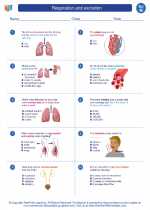Structural Adaptations
Structural adaptations are physical features of an organism's body that have evolved over time to help it survive and thrive in its environment. These adaptations can include things like the shape and size of an animal's body, the structure of its limbs, the presence of certain organs or body parts, and more. These adaptations are the result of natural selection, where individuals with traits that are better suited to their environment are more likely to survive and reproduce, passing on those advantageous traits to their offspring.
Examples of Structural Adaptations
- Camouflage: Many animals have evolved coloration and patterns that help them blend into their surroundings, making it easier for them to avoid predators or sneak up on prey.
- Beak shape: Birds have a wide variety of beak shapes that are adapted to their specific diets, such as long, thin beaks for probing for insects or short, strong beaks for cracking seeds.
- Body shape: Aquatic animals like fish have streamlined bodies that reduce drag as they swim, while animals that live in burrows may have compact, cylindrical bodies that allow them to move easily through narrow tunnels.
- Presence of specific organs: Animals like snakes have specialized organs for detecting heat, allowing them to hunt prey in the dark.
Study Guide
Key Concepts
- What are structural adaptations?
- How do structural adaptations help organisms survive in their environments?
- What are some examples of structural adaptations in animals and plants?
Study Tips
- Review the different types of structural adaptations and how they are beneficial to organisms.
- Look for real-life examples of structural adaptations in different environments, such as deserts, forests, and oceans.
- Understand the concept of natural selection and how it leads to the development of structural adaptations over time.
- Consider the role of human activity in impacting the structural adaptations of organisms through processes like selective breeding and genetic engineering.
Practice Questions
- How does the presence of camouflage help an animal survive in its environment?
- Explain how the beak shape of a bird is an example of a structural adaptation.
- What are some human activities that can impact the structural adaptations of organisms?
By understanding the concept of structural adaptations and how they contribute to the survival of different species, you can gain valuable insights into the amazing diversity of life on Earth and the processes that drive evolution.
.◂Science Worksheets and Study Guides Eighth Grade. Respiration and excretion

 Worksheet/Answer key
Worksheet/Answer key
 Worksheet/Answer key
Worksheet/Answer key
 Worksheet/Answer key
Worksheet/Answer key
 Vocabulary/Answer key
Vocabulary/Answer key
 Vocabulary/Answer key
Vocabulary/Answer key
 Vocabulary/Answer key
Vocabulary/Answer key
 Vocabulary/Answer key
Vocabulary/Answer key
